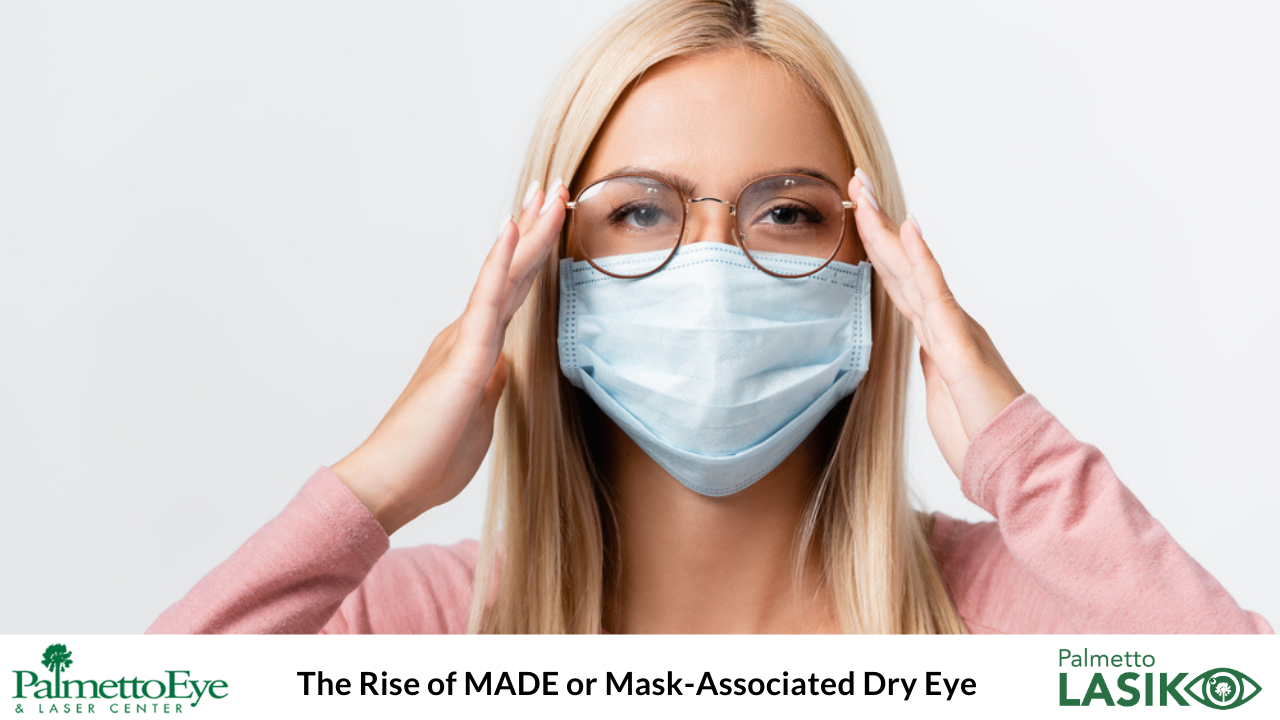
We are all making adjustments in order to follow the new regulations and guidelines that are keeping us safe during the current pandemic. Depending on your existing health and what may have been required to keep you at peak performance pre-pandemic, following current guidelines could be creating new issues.
This is turning out to be the case for those who wear glasses to correct their vision. Not only do those of us who rely on eyewear to see have to deal with fogging issues caused by masks, but there is now a new condition popping up for many.
Mask-Associated Dry Eye, or MADE, is a condition first noticed shortly after the CDC began recommending everyone wear a face covering in order to mitigate the spread of COVID-19. To be clear, the benefits to public health that come from wearing a covering over your nose and mouth in public is well worth any secondary issue it may cause.
Patients, however, who have never previously demonstrated symptoms of dry eye are now experiencing many of the typical signs of dry eye due to Mask-Associated Dry Eye. Those who regularly wear eyewear to either improve their vision or protect their eyes are creating a chamber through which exhaled air is blown across the surface of the eye.
As the air spreads over the eye, the moist film that protects the eye is more quickly evaporated. Therefore, dry areas across the surface of the eye begin to cause discomfort. Symptoms of MADE include stinging, burning, or itching in the eye. Redness, sensitivity to light, and the sensation of having something in your eye are also commonly associated with Mask-Associated Dry Eye.
As a person ages, dry eye can become more likely. The onset of dry eye is being expedited for many older patients due to Mask-Associated Dry Eye. Another cause for concern is that dry eye provokes individuals to touch their eyes and face, which is in direct opposition to current CDC guidelines that recommend keeping your hands off your face to prevent contracting COVID-19.
If you have experienced either new or worsening dry eye since you began wearing a face covering, you should seek advice from a licensed ophthalmologist on recommendations for treating your dry eye. A licensed eye practice like Palmetto Eye & Laser Center will have both suggestions for appropriate face coverings and other remedies to provide relief to your eyes.
Call Palmetto Eye & Laser Center at 864-583-6381 or use our online contact form to discuss your dry eyes and how to effectively treat them.
CDC.gov – Considerations for Wearing Masks
Health.com – Mask-Associated Dry Eye is a Thing